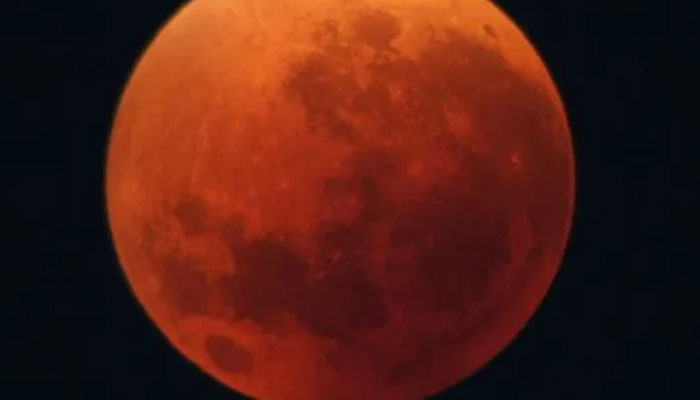[ad_1]
This full moon, accompanied by a partial lunar eclipse, promises an awe-inspiring spectacle

As November unfolds, skygazers are eagerly anticipating the celestial show of the Beaver Moon, set to grace the night sky on Monday, November 27, 2023.
This full moon, accompanied by a partial lunar eclipse, promises an awe-inspiring spectacle, and here’s all you need to know about its origin, optimal viewing times, and the fascinating phenomenon of the moon turning red.
The Beaver Moon derives its name from early Native American tribes and American colonists, marking the time when beavers retreat to their lodges after storing enough food for the impending winter. This lunar event holds historical significance, as fur trappers historically seized the opportunity to hunt beavers during this period for their prized pelts.
For avid moon admirers, the peak illumination of the Beaver Moon is scheduled around 4:15 am on Monday, November 27. However, for those reluctant to rise early, the moon will be captivatingly close to full beginning Sunday, November 26, just after sunset.
Moonrise in the Indianapolis area on Monday is projected for approximately 5:23pm, reaching the Meridian at 12:21am and setting at 8:09am on Tuesday.
The moon’s phases in November 2023 include the Last Quarter on November 5, the New Moon on November 13, the First Quarter on November 20, and the grand finale, the Full Moon on November 27, featuring a partial lunar eclipse as detailed by NASA.
Occasionally, the moon dons a captivating orange or red hue in the night sky. Nasa explains this phenomenon, attributing it to sunlight scattering through Earth’s atmosphere during a lunar eclipse.
Colours with shorter wavelengths, like blues and violets, scatter more easily, allowing longer-wavelength colours such as red and orange to dominate, creating a stunning visual display.
As we bid adieu to 2023, mark your calendars for the final full moon, the Cold Moon, on Dec. 26, offering another celestial treat to wrap up the year in astronomical splendour.
[ad_2]
Source link

 Best Underground Water Leak Detection Equipment 2024
Best Underground Water Leak Detection Equipment 2024  Best Backyard Ideas: Turn Your Outdoor Area Into a Creative and Calm Haven
Best Backyard Ideas: Turn Your Outdoor Area Into a Creative and Calm Haven  Babar, Rizwan are good players but not whole team, says Mohammad Hafeez
Babar, Rizwan are good players but not whole team, says Mohammad Hafeez  Pak vs NZ: Green Shirts aim to bounce back against Kiwis today
Pak vs NZ: Green Shirts aim to bounce back against Kiwis today